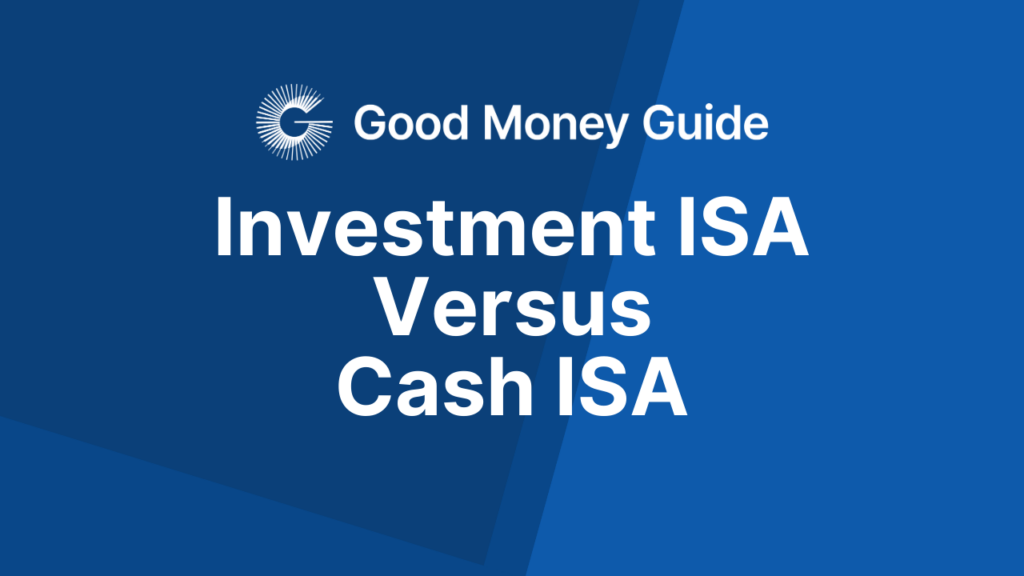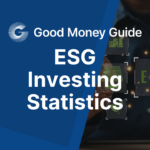- ISA (Individual Savings Accounts) let you invest up to £20k a year with tax-free profits
- Stocks & Shares ISA are better in the long run (5 years +) as they track the stock market, which can beat inflation
- Cash ISAs are better if you will need the money sooner as there is no risk of it becoming worth less if the stock market goes down
Should you invest in a stocks & shares ISA or save in a cash ISA?
If you want to make more money, stocks and shares ISAs are better in the long-term, but if you want a safe place to earn a little bit of interest, then a cash ISA is better in the short term.
By comparing cash ISAs vs investment ISAs you’ll be able to decide which is best for your current circumstances and savings goals, or if in fact you could benefit from putting money into both.
What’s the difference between cash & investment ISAs?
With a cash ISA you get a fixed return on your savings, known as the interest rate.
With a stocks & shares ISA your money is invested, meaning their value could go up or down and you could get a higher return than cash.
- Want to know more about ISAs? Read our guide on how to invest in an ISA.
What’s better, investing or saving in an ISA?
A cash ISA is better for you if you don’t want to take any risk with your savings. You are guaranteed to get a certain return, plus your money back.
Cash ISAs have become more attractive for savers in over the last few years. This is because interest rates on cash ISAs have improved as the Bank of England has increased the Base Rate.
The best cash ISAs are offering around 5% returns in 2025, some of the best rates that have been seen in the last 10 years. This is especially good seeing as inflation is so low (2.5% in December 2024), meaning your savings in a cash ISA will grow more by going up in value in real terms.
An investment ISA is better for you if you are happy to put your money at risk of going down for the chance to see it potentially increase much more than the interest rate offered on a cash ISA, over time.
Personally I think it is a good idea to have both. Keep money you don’t need for at least five years in an investment ISA to benefit from stock market returns, and some in an Easy Access cash ISA to gain from the interest rate until you need the money.
What type of ISA gives the best returns
Over time returns are typically higher in an investment ISA.
For example, in 2023 AJ Bell, an investment platform and wealth manager, calculated for £10,000 in a cash ISA over the last 10 years the return was £1,181. By comparison the average returns from a UK Equity Income fund (which can be held in an investment ISA) in that time was £6,676.
AJ Bell’s senior analyst Tom Selby says: “Harnessing the power of investing and compound growth is particularly important over longer periods of time as inflation can eat away at the value of your cash savings.
A long time horizon of five or 10 years plus gives enough time to ride out any periods of short-term volatility that might be experienced when investing in the stock market.”
Cash ISA and Stocks & Shares ISAs compared
| Cash ISA | Investment ISA |
| Money is not at risk | Your money is invested in stocks and bonds |
| Guaranteed fixed returns | Riskier – you could lose money |
| Returns are below inflation, meaning your savings are losing value in real terms | Unlimited returns if your investments perform well |
| Better for people who need instant access to their money | Better for people who don’t need their money for at least five years |
Benefits of a cash ISA
- Guaranteed rate of return (interest rate)
- Your savings are not at risk of going down
- You can save into a cash ISA and an investment ISA in the same year (up to your £20,000 allowance)
- Gains you make are yours to keep tax-free
Benefits of stocks and shares ISA
- Your invested savings can increase in value by an unlimited amount
- You can choose what you invest in
- You can save into an investment ISA and a cash ISA in the same year (up to your £20,000 allowance)
- Gains you make are yours to keep tax-free
Drawbacks of a cash ISA
- Returns are capped – you can’t make more than the fixed interest rate
- No cash ISAs beat inflation, meaning your savings are losing money in real terms
- You’ll need to lock your money away for up to five years to get the best rates of return
- Withdrawals per year will be limited (unless you get an Easy Access ISA)
Drawbacks of an investment ISA
- You could lose all your money
- You may need to withdraw money in a falling market, forcing you to sell your investments for less than you paid for them
- Fees and charges tend to be higher than cash ISAs
How do ISAs make you money?
Cash ISAs and investment ISAs generate returns in different ways.
With cash ISAs your ISA provider pays you a fixed rate of interest in exchange for you leaving the money in their account, the same way your bank would pay you a return on a standard savings account.
Investment ISAs generate returns, in terms of dividends and capital gains, by investing your money in funds it chooses, or investments you choose yourself. If the value of your investments goes up, so does the value of your ISA savings.
- Ready to invest in an ISA? – Compare the best stocks and shares ISA accounts here.

Richard is the founder of the Good Money Guide (formerly Good Broker Guide), one of the original investment comparison sites established in 2015. With a career spanning two decades as a broker, he brings extensive expertise and knowledge to the financial landscape.
Having worked as a broker at Investors Intelligence and a multi-asset derivatives broker at MF Global (Man Financial), Richard has acquired substantial experience in the industry. His career began as a private client stockbroker at Walker Crips and Phillip Securities (now King and Shaxson), following internships on the NYMEX oil trading floor in New York and London IPE in 2001 and 2000.
Richard’s contributions and expertise have been recognized by respected publications such as The Sunday Times, BusinessInsider, Yahoo Finance, BusinessNews.org.uk, Master Investor, Wealth Briefing, iNews, and The FT, among many others.
Under Richard’s leadership, the Good Money Guide has evolved into a valuable destination for comprehensive information and expert guidance, specialising in trading, investment, and currency exchange. His commitment to delivering high-quality insights has solidified the Good Money Guide’s standing as a well-respected resource for both customers and industry colleagues.
You can contact Richard at richard@goodmoneyguide.com




